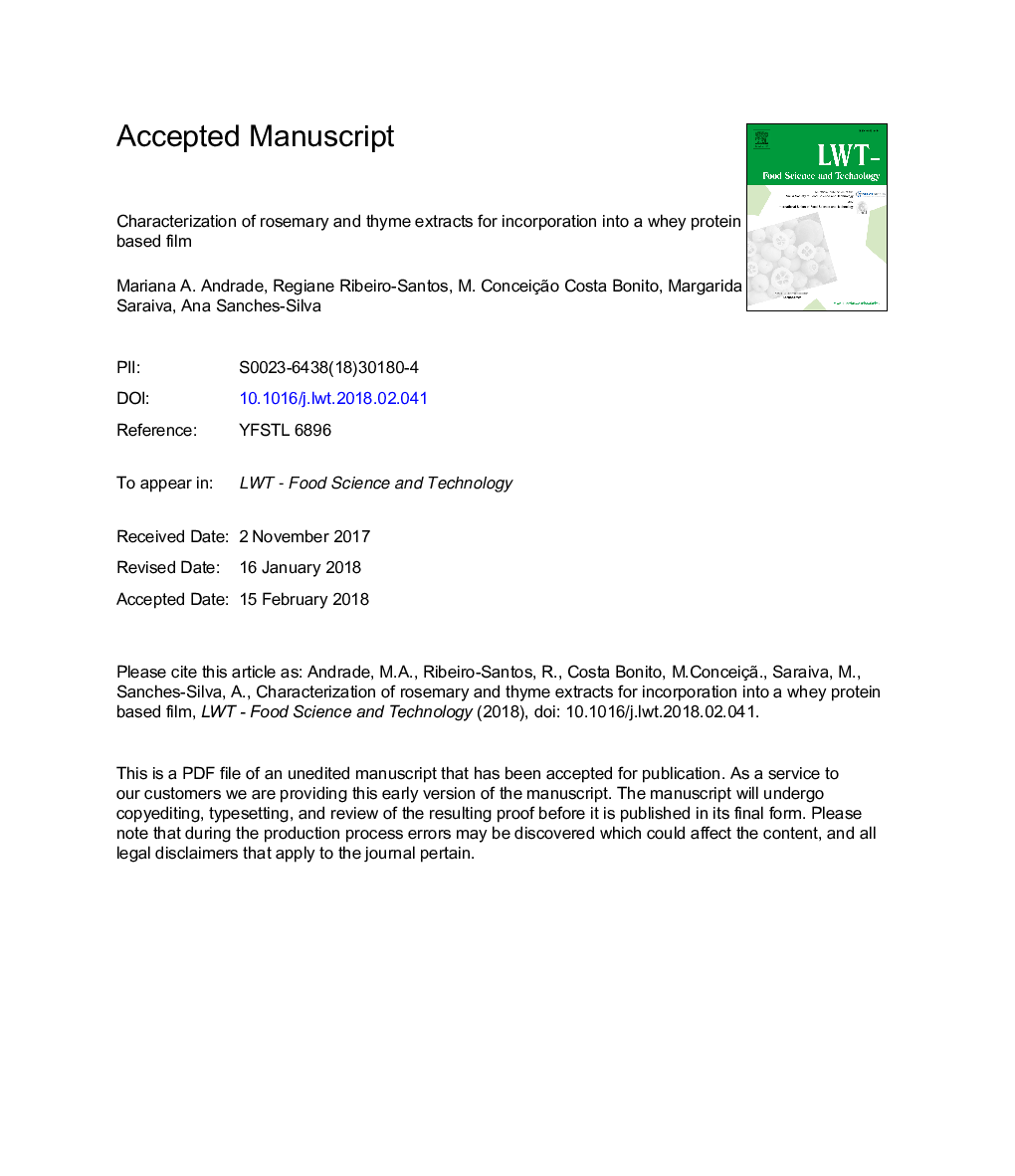| Article ID | Journal | Published Year | Pages | File Type |
|---|---|---|---|---|
| 8891382 | LWT - Food Science and Technology | 2018 | 48 Pages |
Abstract
Active packaging is designed to interact with foods by releasing active components with biological properties, allowing the extension of foods shelf-life, being aromatic plants a source of active compounds. The main goal of this research was to develop a biodegradable whey protein based film, incorporated with an aromatic plant extract. Ethanolic extracts from rosemary and thyme were obtained from three commercial brands. The DPPH
- scavenging activity assay showed that the rosemary extracts presented the highest antioxidant capacity. Thyme acetone extract had the highest antioxidant activity in the β-carotene bleaching assay. Three different mixtures of rosemary and thyme extracts with the highest antioxidant capacity showed a lower antioxidant capacity than the single extracts. The content of carnosic acid, carnosol and rosmarinic acid was determined in the three rosemary extracts, having the extract from the brand C shown the highest phenolics content. The extract showed antimicrobial activity against Staphylococcus aureus, Listeria monocytogenes and Clostridium perfringens. For the active film, 1% of the rosemary extract was incorporated into the whey protein film. The film presented antimicrobial activity against L. monocytogenes and S. aureus.
- scavenging activity assay showed that the rosemary extracts presented the highest antioxidant capacity. Thyme acetone extract had the highest antioxidant activity in the β-carotene bleaching assay. Three different mixtures of rosemary and thyme extracts with the highest antioxidant capacity showed a lower antioxidant capacity than the single extracts. The content of carnosic acid, carnosol and rosmarinic acid was determined in the three rosemary extracts, having the extract from the brand C shown the highest phenolics content. The extract showed antimicrobial activity against Staphylococcus aureus, Listeria monocytogenes and Clostridium perfringens. For the active film, 1% of the rosemary extract was incorporated into the whey protein film. The film presented antimicrobial activity against L. monocytogenes and S. aureus.
Related Topics
Life Sciences
Agricultural and Biological Sciences
Food Science
Authors
Mariana A. Andrade, Regiane Ribeiro-Santos, M. Conceição Costa Bonito, Margarida Saraiva, Ana Sanches-Silva,
